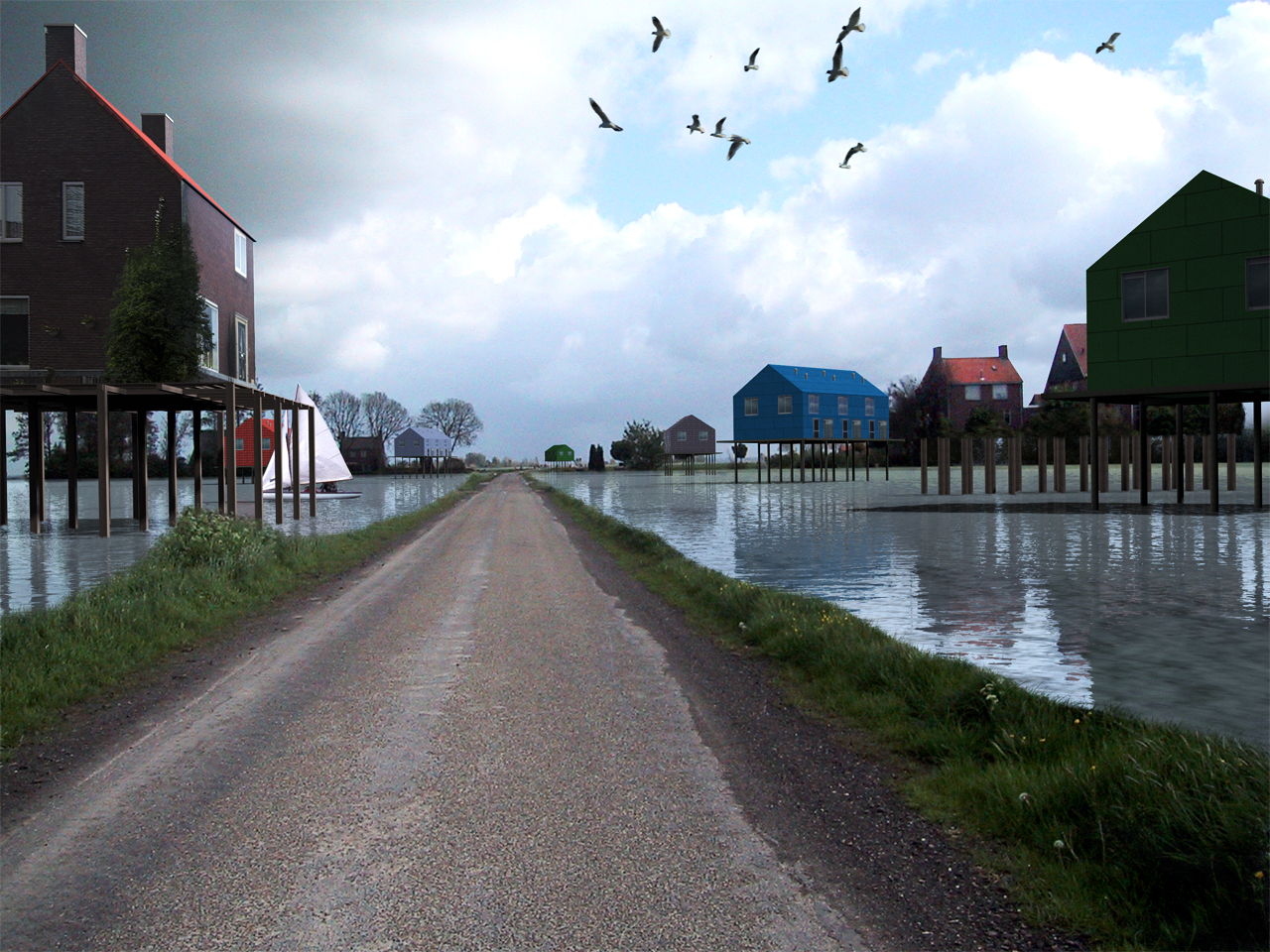
Kampen Floodplains
Sitting in what was once the North Sea, the city of Kampen requires 6000 new homes. Its position on the river Ijsselmeer puts it at an increased risk of flooding owing to increased snow melt in the Alps as a consequence of global warming. A solution is needed that addresses the reality of big “once in a century” floods and offers the types of characterful homes to counteract the uniformity of recent developments.
- Location
- Kampen, Netherlands
- Status
- Competition
- Year
- 2005–2005
- Surface
- 4000000 m²
- Client
- Dutch Ministry of Infrastructure and the Environment
- Programmes
- Residential, Master plan
- Themes
- Housing
The city of Kampen is situated along the river IJssel just before it comes together with the IJsselmeer, a former part of the North Sea. Due to the urbanization of Middle Europe, the melting of snow in the Alps owing to related climate changes causes more peak water flows in rivers than have historically been expected. Without extra measurements more regular floods can be expected.
How to solve this issue? And how to benefit from this solution when simultaneously 6,000 houses have to be built in or around the city?
The weir variant is the cheapest solution by far, including the raising of the houses and the additional insurance. This requires an inlet 615m wide and 3km south of Kampen. An outlet should be created at the northeast side of the city. It means that the area can be flooded once per 100 years. Flood insurance can cover the uncertainty for the inhabitants. Or a simple lifting act of the existing houses and monuments can be arranged. It leads to a spectacular surrealistic landscape of lifted inhabitation.
The 6,000 homes programmed for the area need to have a special character, as a counterweight to the uniformity of recently developed residential areas. The new nature reserves form an attractive living environment. Who wouldnt like to live in a house with a view of a spectacular, varied nature park or even in it? The area will have a marsh-like character with high value as a natural habitat. Meanwhile, agriculture in the area (mainly meadows for summer grazing) can continue as before. The flood plain reinforces the spatial characteristics and charming isolation of the city. A mix of pile dwellings, dyke dwellings and floating houses encircles and inhabits this plain. A small station neighborhood will serve commuters and the flood plain will become a central park.
Gallery
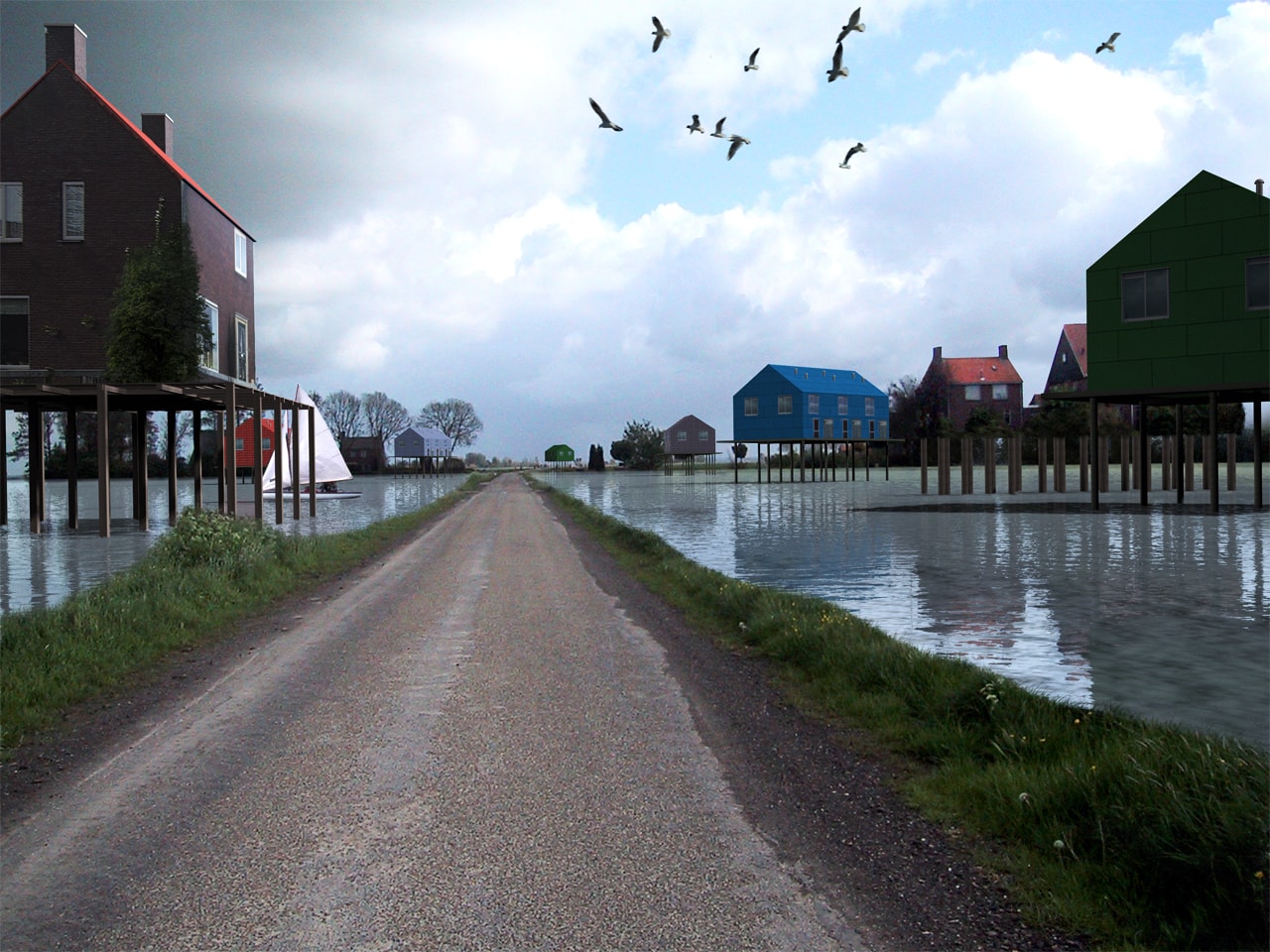
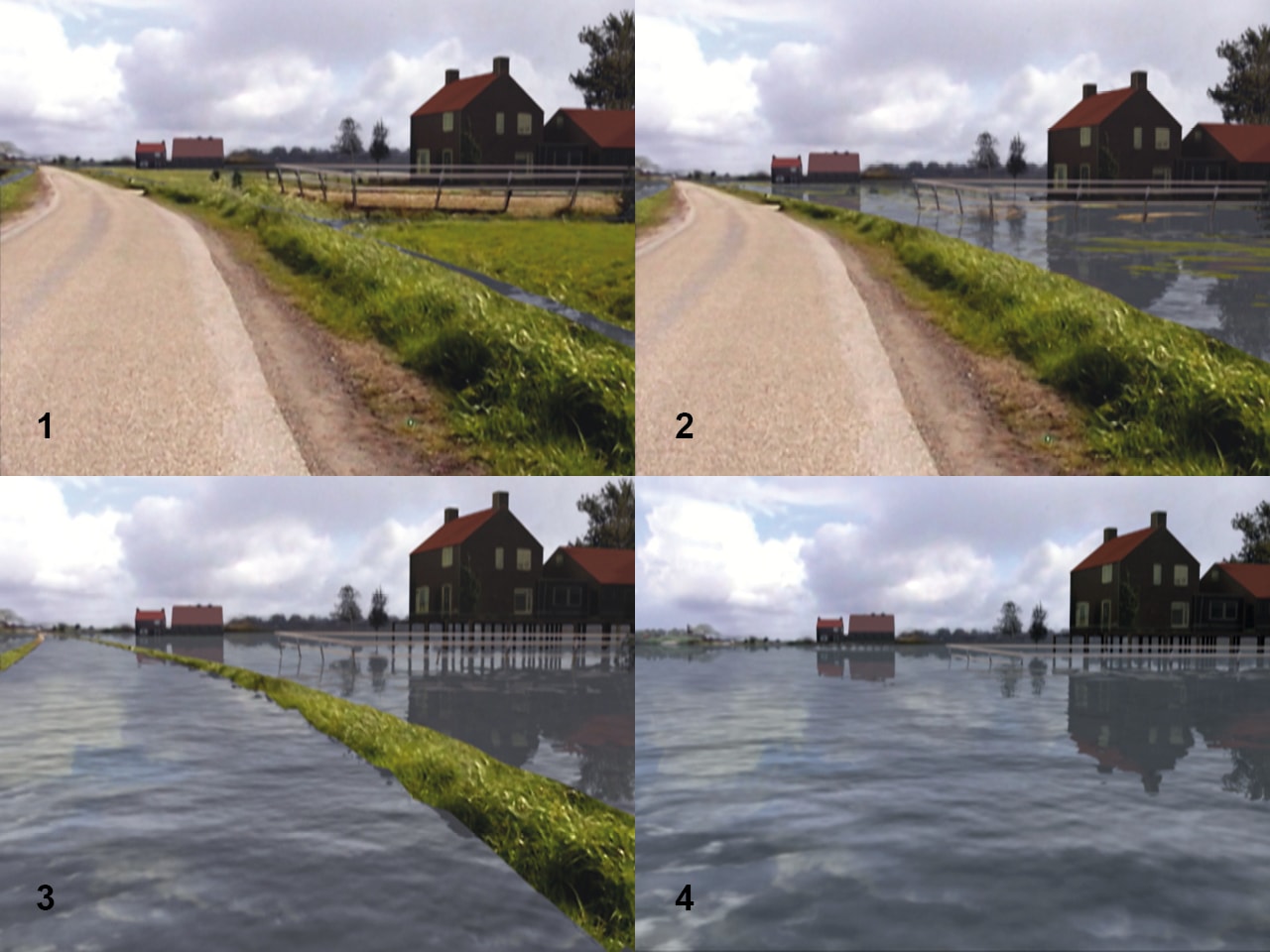
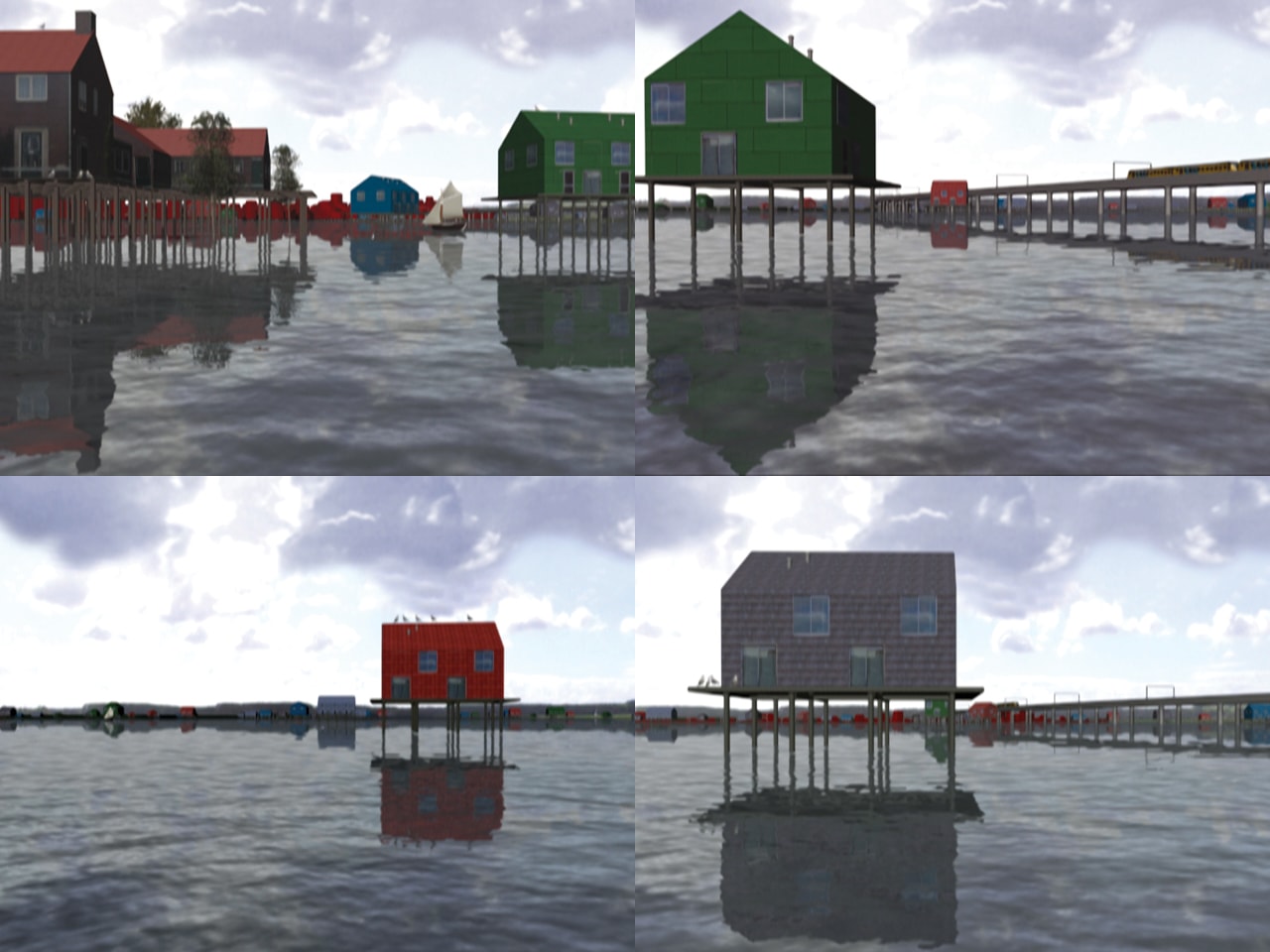


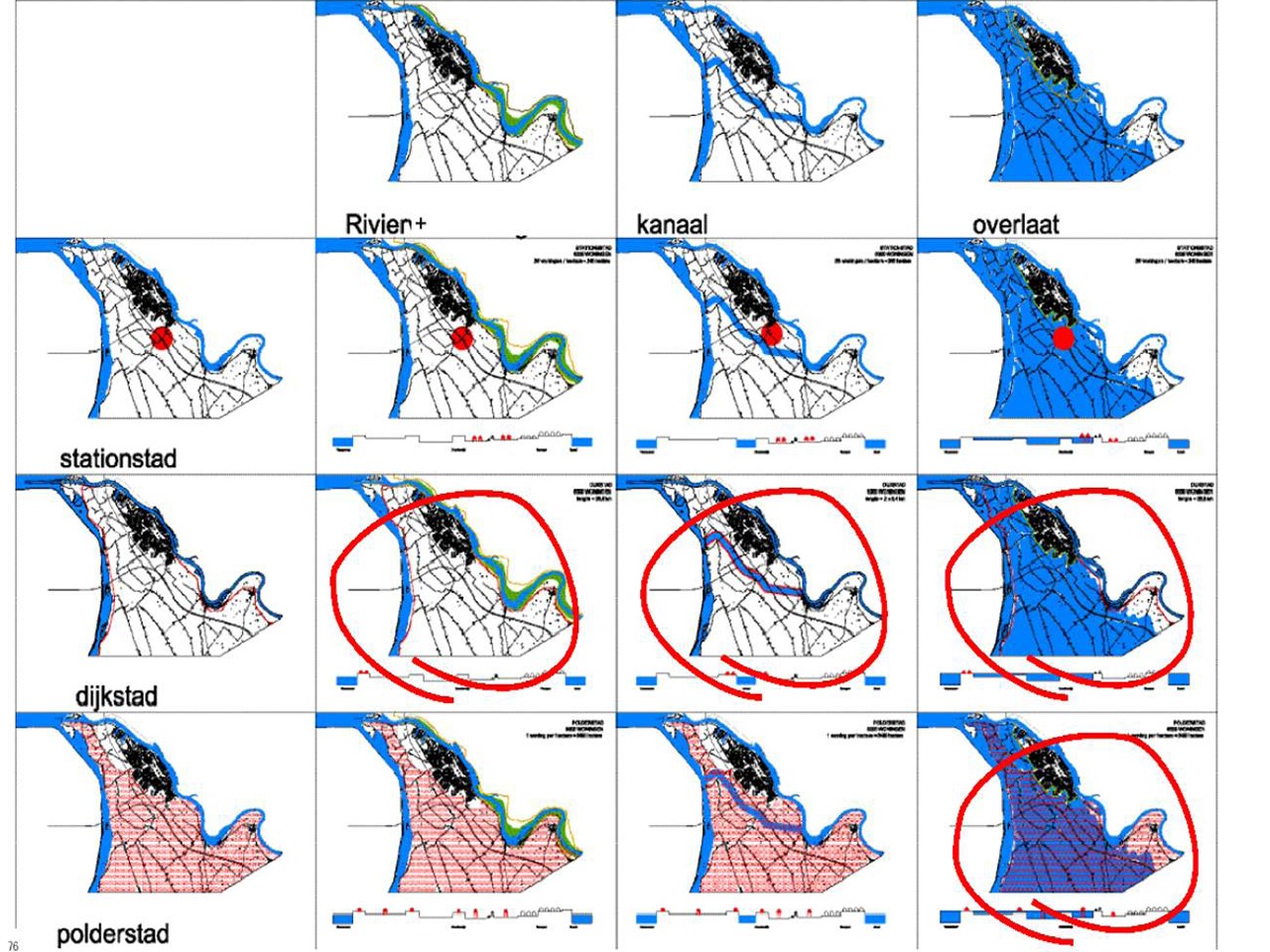
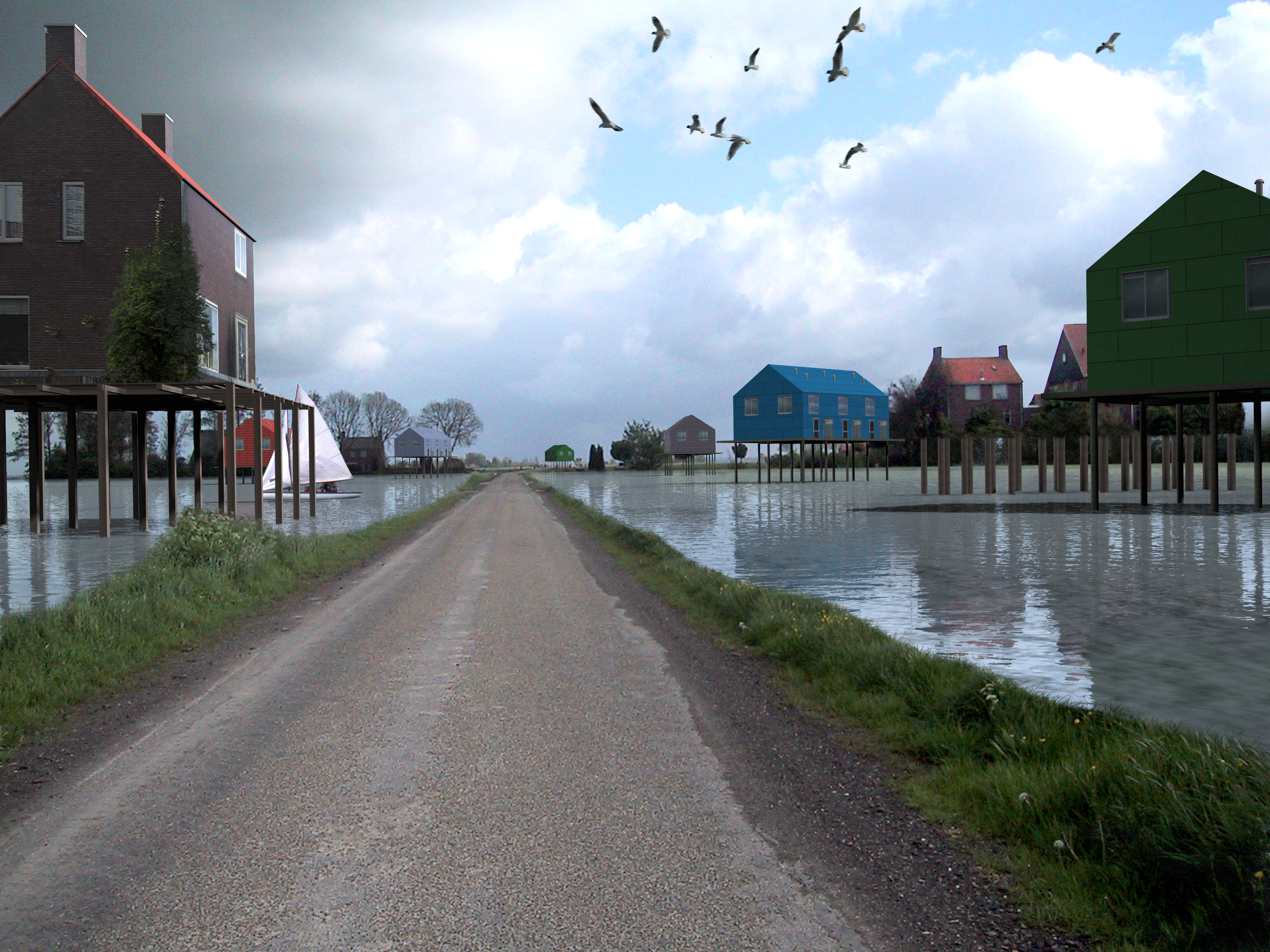
Credits
- Architect
- Principal in charge
